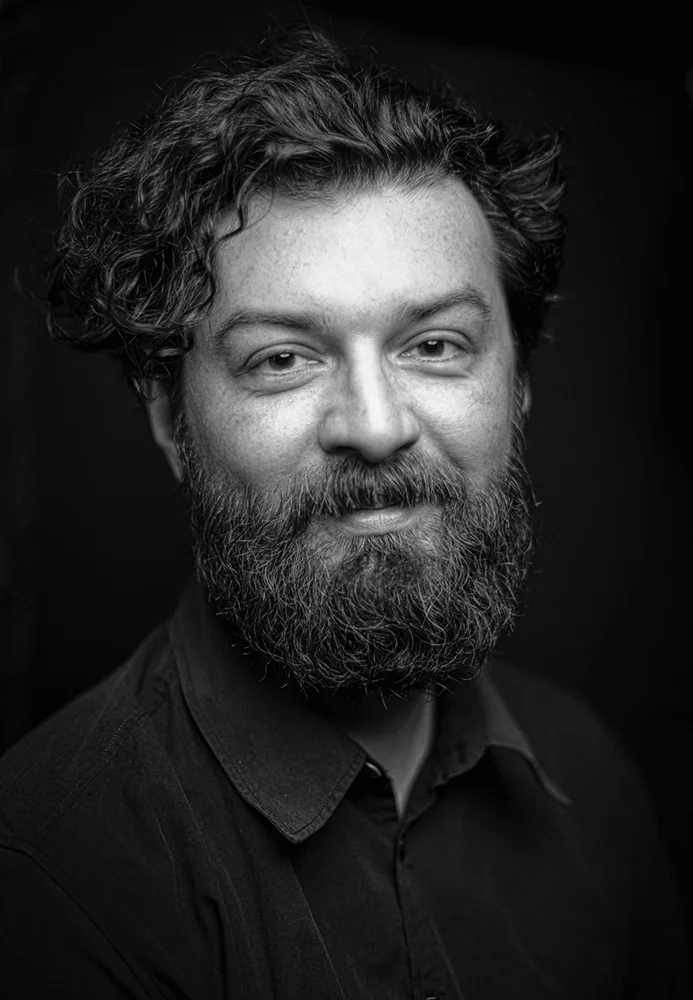Piotr Skubisz is an independent photographer with a keen interest in portrait photography, the human body, and the exploration of self-awareness and self-discovery. He studied at The Film School in Łódź and Polish Studies at the University of Warsaw, where he developed a strong interest in cultural anthropology, which influences his approach to capturing the human experience. For him, photography is an ongoing journey of experiencing and discovering, blending aesthetics with reflection.
Recognized for his work, he has been awarded a Gold and Bronze medal at the PX3 2024 competition and received an official selection in the IPA. Piotr collaborates with individuals to create authentic, expressive portraits and fine art photography. His work often explores the nuances of human emotion and cultural identity, striving to capture the unique essence of each subject.
Currently based in Warsaw, Piotr enjoys traveling and is always eager to explore new horizons. Commissions are available, including travel assignments.
Statement
"Photography, for me, is an ongoing journey of experiencing and discovering. My work explores the intricate layers of identity, self-discovery, and cultural identity through the intimate lens of portrait and body photography. Each image aims to blend aesthetics with introspection, inviting viewers to reflect on the diverse narratives that shape our world.
Photography is an essential path for me in discovering and understanding otherness, which also redefines myself. I am always on a journey, even when I am in the same place.
From my earliest years, I have been fascinated by otherness in its broadest sense. This fascination, born in the gray reality of communist Poland, led me to immerse myself in books about people from other cultures, from distant lands, seeking to understand different cultures, places, and people. Later, I became absorbed in science fiction literature, which offered another way of looking at the reality surrounding me, from different points of view. For example, Ursula K. Le Guin's "The Left Hand of Darkness," in which there is a species similar to humans known to us from Earth, but with the difference that the organism assumed a given gender only for the duration of the mating season. This described condition showed how many things, views, our perception of reality, cultural conditioning, often unconsciously determine our perception of other people, the world, what is considered obvious and absolute. And ourselves as well. Just as much of our perception of the external world is conditioned by our own body - the left side, the right side. Better vs. worse.
The human being and the body in and through which we communicate and perceive the world - these are the topics that are a constant mystery to me, the main theme of my photography. Which, in turn, is a medium of contact with this mystery, a constant discovery of the Other, the Unknown. Through my lens, I strive to celebrate the beauty of diversity and the universal quest for understanding and connection."
Recent Awards and Honors:
2024 PX3 (The Prix de la Photographie, Paris): Gold and Bronze Medal (Portrait) | 2024 IPA (The International Photography Awards): Official Selection (Fine Art-Portrait, People-Lifestyle, People-Traditions/Culture) | 2024 Brodziak Academy: TOP10 Masters of Creation | 2024 ReFocus The World Photo Annual Awards: Silver (Fine Art), Bronze (People), Bronze (Portrait), Honorable Mention (People) 4x Nominee (Fine Art, People, 2x Portrait) | 2024 Life Framer: Black & White Editors’ Pick | 2024 TIFA, Tokyo International Foto Awards: Bronze Winner People-Portrait, Honorable Mention 4x (2x Fine Art-Portrait, 2x People-Portrait) | 2024 Monochrome Awards: 3rd Place Portrait, Honorable Mention (1x Portrait, 1x Fine Art) | 2025 LensCulture New Visions 2025, Humanity: Editors' Pick.
Awarded Photographer of the Week - Week 08
